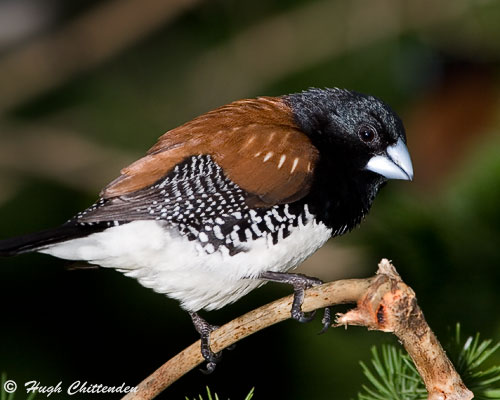Topic : Land Birds
Article 13 ![]() 29 December 2006
29 December 2006
Utilization of Stinging Nettle seeds as a food source
Forest seedeaters such as Crimsonwings, Twinspots, Mannikins, Canaries and Waxbills utilize the seeds of understorey herbs of the Stinging Nettle family (Urticaceae) extensively as a food source.

Abyssinian Crimsonwing (Thanks to Martin Goodey for the use of his crimsonwing photo)
Habitat
This family of nettle plants, most of which are armed with stinging hairs, grow both in the forest undercanopy and on forest margins, where they are sought after by avian seed-eating inhabitants. They occur commonly from sea level to the upper limits of Afromontane forest vegetation (usually about 8000 ft in central Africa)


Laportea spp fed on by Abyssinian Crimsonwings in Mt Meru forest, Tanzania

Green Twinspot female

Laportea alatipes, found commonly along the KwaZulu-Natal coastal regions.
On the southern African coastal regions of KwaZulu-Natal, there are a number of nettles that provide seed in late summer for forest seed-eaters. One of the most well utilized plants is the common herb Didymodoxa caffra. On the coastal dunes in the Red Coast Milkwood (Mimusops caffra) belt D. caffra is joined with Droguetia iners and Laportea peduncularis as one of the main foods for Green Twinspots.

Red-backed Mannikin
Where it is a little damper near streams and on the edges of swamp forest, seed from Laportea grossa, Laportea alatipes and Laportea peduncularis plus the grass Setaria megaphylla and a sedge called Scleria angusta make up the bulk of food for these birds. In these damp areas both Green Twinspot and Grey and Common waxbill feed on all the above plants.


Laportea grossa and Didymodoxa spp
